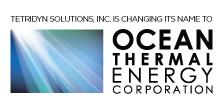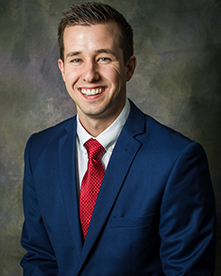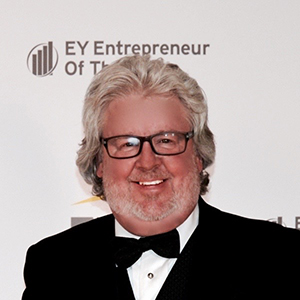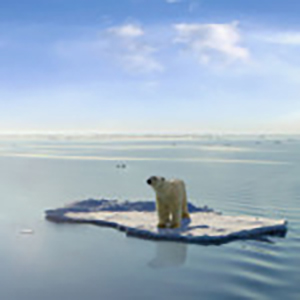Written by: Becky Wink
A spotlight profile on Rich Bailey, Owner of DewPoint Systems, a Hawaiian firm that provides deep seawater (DSW) consultation in the areas of freshwater condensation systems, cold thermal energy agriculture, and aquaculture production systems.
Rich Bailey: Right now, temperature differential technology is primarily used for energy creation (OTEC) and seawater air conditioning (SWAC). I favor a holistic approach that piggybacks off that technology in areas where it is in use. We have found other applications for the cold water. Specifically, it can be used to grow crops where crops can’t be grown, to help offset imports and provide food security for remote areas. We can also use this technology to produce clean drinking water. This can all be done without touching the seawater itself.
BW: Very interesting. How did you get involved in this line of work?
RB: I was the Aquaculture Extension Specialist at the University of Hawaii and the State of Hawaii Department of Agriculture, in 1990, when I shared an office with Dr. John Craven. Dr. Craven is a pioneer in the field of OTEC. I became interested in his work and especially the application of using seawater for agricultural production. In 2000, I joined Dr. Craven to help him research and refine the process.
BW: What was your first project together?
RB: We worked on refining ColdAg™ technology, which we patented in 2006. ColdAg™ technology is based on exploiting thermal differential technology of OTEC and applying it to plants.
BW: How does that work?
RB: It’s generally thought that plants’ growth was primarily directed by changes in the photoperiod – the amount of sunlight as it changes from season to season. Here in Hawaii, there is very little change in photoperiod across seasons. We found that photoperiod is only one physical aspect of dormancy. In northern latitudes, after winter, and the onset of Spring, the soil warms more slowly than the air. With ColdAg™, we exaggerate the temperature differential between the roots and the leaves. This fools the plants into thinking it’s spring. It gives us the ability to turn plants on and off, to either force dormancy or simulate a perpetual spring, and the photoperiod is not playing a factor. Using ColdAg™, we are now able to produce three crops per year. This greatly extends the growing period, accelerates the growth process, and expands crop diversity.
 BW: Fascinating. What crops have you grown with ColdAg™?
BW: Fascinating. What crops have you grown with ColdAg™?
RB: Lots of different crops – in fact, cool season crops, which are not grown in tropical climates, grow the best. Actually, tropical plants don’t like cold roots. Another crop that proudly demonstrates our technology is our wine grapes which have been producing three crops per year or a crop every 120 days. These grape vines have been growing using exclusively cold seawater since 1997.
BW: So you and Dr. Craven and Dr. Davidson developed ColdAg™ using the OTEC’s thermal differential technology – what else have you done with it?
RB: We have retooled ColdAg™ into SuperSpringAg™. This incorporates the technology of using thermal differential to turn the plants on and off, and it also uses the condensation from the cold seawater pipes to irrigate the plants. We have since rebranded all of our technologies under one process, called Thermal Energy Agriculture (TEA). The next generation of TEA is DewPonics® which is a Registered Trademark. DewPonics® uses a modular approach that allows us to alter the temperature difference more precisely in each plant. DewPonics® uses SCADA (supervisory control and data acquisition) to gather and analyze real-time data. We watch the specs via iPad, enabling us to give each plant exactly what it needs, and nothing more. This has allowed us to reduce energy requirements by 50%.
BW: What real-world applications do you envision for this?
RB: There are many commercial applications. For example, in a resort community like Hawaii, tourists want to know that the produce they are eating is locally grown and very fresh. I can grow leafy greens, herbs, and spices, and sell them to restaurants. Island nations like Japan, Korea, and Taiwan are doing this already. It doesn’t compete with local producers since we use it to add to crop diversity. I am doing this here at NELHA since the cold water pipes are set up here, and I can do it anywhere that OTEC is being done. I hope the NELHA project becomes a model for other nations.
BW: Powerful stuff. What do you think is next for the technology?
RB: I have a brewing project that will help drought-afflicted regions like California. I have been recently contacted by a company that is interested in RainDome™. RainDome™ is a scalable atmospheric water generator.
BW: How does that work?
RB: The density of seawater gives it the ability to condense a lot of water out of the air. Hawaii is a very humid climate with a high dew point. Seawater running through various heat exchangers can produce a lot of fresh water. It can purify wastewater or brackish water by heating it up, vaporizing it, and turning it back into water. Right now, there are small atmospheric water generation units to put in your home, but these are very energy intensive. We are working to do this on a bigger scale, to service more people and run things more efficiently. Instead of being the size of a home unit or a semi-trailer, the RainDome™ system would be the size of a football field.
BW: Does this adversely affect the environment in any way?
RB: No, because it uses a completely renewable thermal energy resource and universal atmospheric vapor. The oceans naturally generate a lot of atmospheric vapor and it is clean.
BW: Why isn’t this great technology in use everywhere?
RB: This technology piggybacks off ocean thermal energy conversion, and there aren’t a lot of pipes around the world, YET. The thermal energy technologies that we have developed have been primarily designed to use cold seawater as the source of cold energy that drives our systems. Our new design approach has now opened additional opportunities to couple our technology with other sources of thermal energy, like geo thermal and solar thermal that can create the cold fluid energy we need in a closed loop configuration.
BW: Is Hawaii the only place where this can be done?
RB: No. Japan, Korea, and Taiwan are already experimenting with the “ColdAG” technology. Taiwan has built a university around ocean water technologies (National Taiwan University), and Japan has a university focusing on the agricultural aspects. I would like to see commercial TEA facilities in Guam and the Marianas, or anywhere else that OTEC is done.
BW: Thank you so much for your time!








